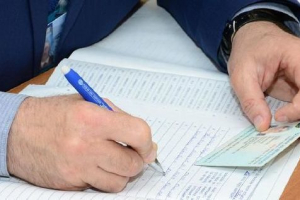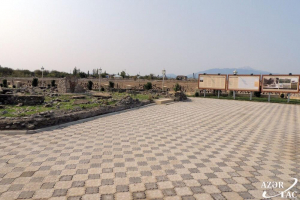


At the beginning of the 19th century tens of thousands of Armenians from Iran and Turkey have relocated to the mountainous area of Karabakh region in Azerbaijan. Historian Turkan Gasimova indicated that the Turkmenchay Treaty, that was signed between Russia and Iran on February 10, 1828, is when the mass immigration of Armenians to the territories of Azerbaijan began.
Article 15 of the Turkmenchay Treaty stipulates that Armenians living in Iran may relocate north of Araz river within a year after signing of the Treaty and resettle anywhere they wish. In years 1828-1829 about forty to fifty thousand Armenians from Iran and about ninety thousand from Turkey have migrated to Azerbaijan. The relocation of Armenians from Turkey has started after the Turkish-Russian war and the signing of the Edirne Peace Treaty.
This migration is mentioned in many written sources. It has also been repeatedly admitted by the Armenians themselves. Armenians have erected the "Maragha - 150" monument on the occasion of their arrival to Karabakh region. "Maragha - 150" monument in Shikharkh settlement of Terter region was built in 1978 by the Armenians themselves on the occasion of the 150th anniversary of the first two hundred families' relocation to Karabakh. The monument built from ordinary river stones is written in the Armenian language and states "Maragha - 150". The 3-meter-high and 1-meter-wide monument was destroyed by the Armenians themselves in 1991, because it reflected the time of the Armenian immigration to Karabakh.
In 1978 Armenians held a solemn ceremony on the occasion of the opening of the monument "Maragha - 150". Orientalist and historian, academician Ziya Bunyadov states in his article "Myths and myth fabricators" that the opening of the monument "Maragha - 150" at the years 1978-1979 appeared on all the periodical press of Karabakh.
One of those who remembers the opening of "Maragha - 150" monument in 1978 is the local from Terter region Ilgar Gasimov. Recalling the events of that day I.Gasimov said: "At that time I was 16 years old. My father and I were going to Umudlu village as we saw Armenians having the opening of the monument. The monument consisted of typical river stones, in the area covering approximately 30 square meters, with a "Girls at the Spring" painted mosaic composition. The central monument was about 1.5 meters wide and 3 meters high, and it had marble column springs on the right and left sides respectively. Both columns had vertical writings, one stated 1828 and the other 1978”. According to the resident of Terter region, similar monuments observing the arrival of Armenians' to Karabakh were also built in Khankendi and Chayli villages of Terter.
In 2016, the head of the UN High Commissioner for Refugees in Azerbaijan, Furio de Angelisi, visited the “Maragha - 150” monument in Shikharkh village and took pictures of the monument.
The remains of the monument "Maragha - 150" are now in the village of Shikharkh, located several kilometres from Tartar. Taking into consideration the historical and political significance of this monument, the State Committee for Refugees and IDP’s carried out repair works around the area, the floor was covered with tiles, the area was fenced and lighting systems were installed. Also, historical documents, information and photographs connected with the "Maragha - 150" monument were collected by the State Committee and archived. They were placed on stands in Azerbaijani, Russian and English languages.














